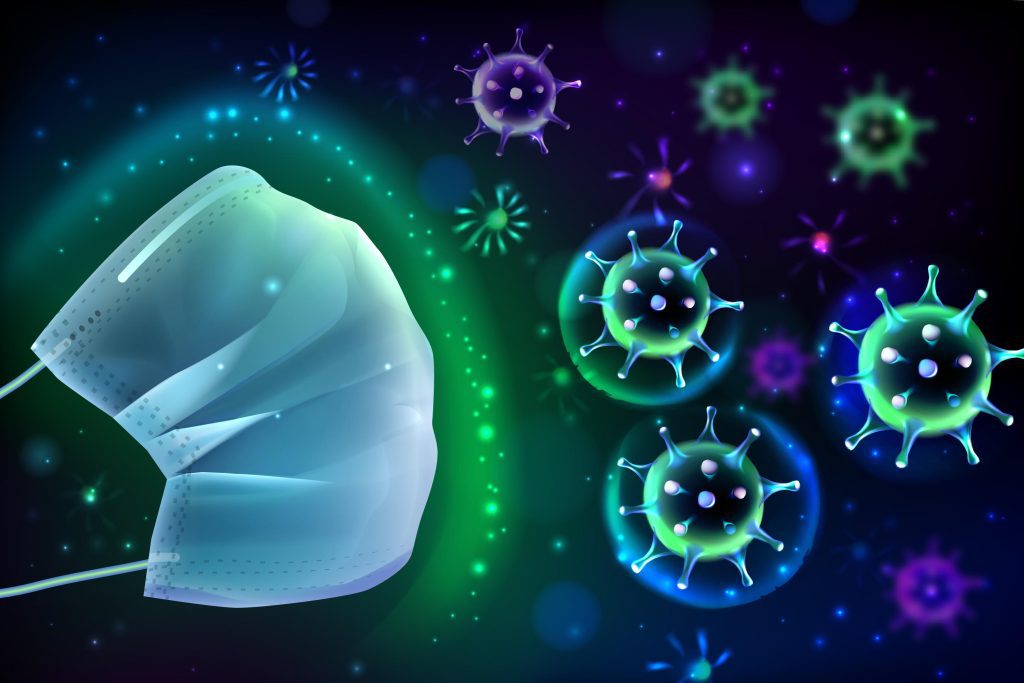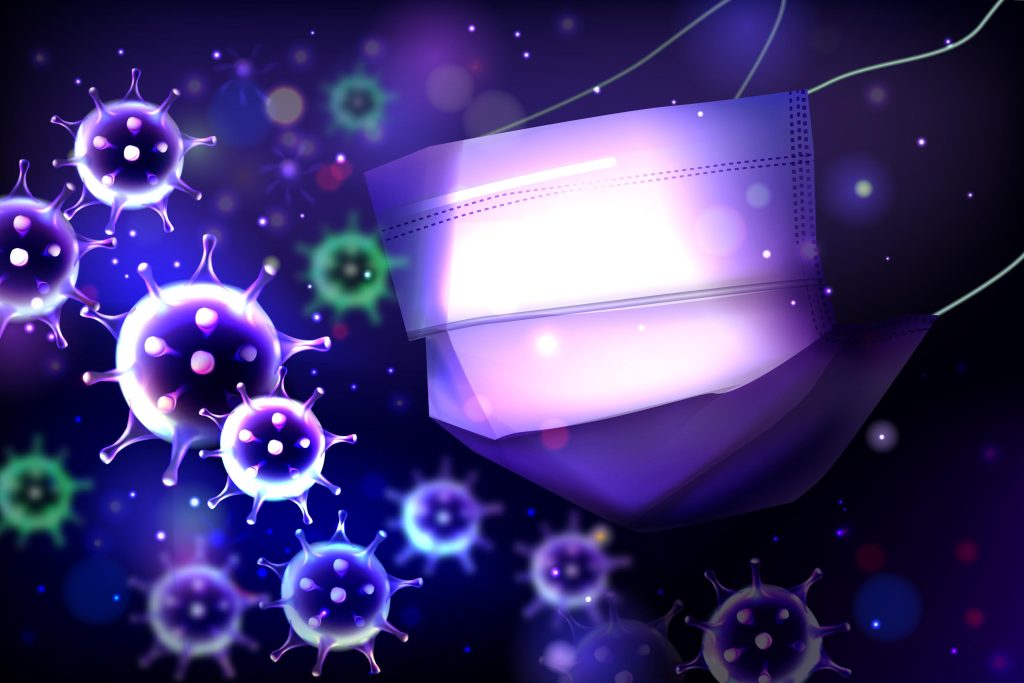
The Silver Lining
Who ever thought that SILVER could be a contributor to fighting viruses in oujr body…well the PhSilver company did and we are proud to carry their product line.Their superior structured Silver has been highly touted as an antibacterial and antimicrobial compound in research for quite a while now. It appears to illustrate its most significant potential for antibiotic-resistant bacteria, which seems to be a more prominent phenomenon today.
However, a topic receiving further exploration is the interaction(s) between our superior silver and viruses. Ever since the advancement from the deprecated colloidal silver, contemporary structured silver improvement has motivated scientists to go down this avenue further.This is because our structured silver has a much smaller size, but a much larger surface area as opposed to its previous generation counterpart. What researchers have discovered is quite remarkable.

Enter the
Arenavirus
As there are many different kinds of viruses out there, it can be challenging to say how our silver will affect every single one of them.But one type of virus family (which is just a categorization of viruses); the arenavirus has been studied by researchers. And what makes this family of viruses so unique is that they have a high fatality rate, with no vaccines currently available (as of this writing).
Antiviral drugs presently available on the market today have shown little to no effect in treating those infected with this virus [1]. Even more interesting, but also very scary, is the fact that this family of viruses is listed officially as a potential bioweapon [2]

In one study, a petri dish of cells was exposed to the Tacaribe virus (a type of arenavirus) 24 hours.
- Silver was able to decrease the viral load, which is essentially a measure of how much of the virus is present in the cells. [3]
This is because the our superior silver was able to inhibit the virus's replication process. What truly can make a virus deadly is its capacity to multiply and spread throughout the body, making a bad situation turn into a much worse situation. Thankfully, however, it seems as though structured silver may be able to prevent that "worse" scenario.
How Did Scientists Figure This Out?
So how were researchers able to discover that our superior silver’s benefits in relation to such a powerful family of viruses such as arenavirus?
Well, in a cell culture study on the HIV virus:
- Researchers discovered that silver binds to similar spots on the HIV virus compared to the Tacaribe virus used in the aforementioned study [4].
- Just as silver inhibited the viral load of the HIV virus, the same was seen here as well.
While researchers are still trying to figure out what mechanism exactly is responsible for our superiod silver’s effects on arenaviruses, researchers have come up with some speculation.
One of these speculations comes from another petri dish study that used the same attachment sites where silver binds to on the arenavirus.
- Researchers postulated that silver contains the ability to inhibit specific enzymatic proteins of the virus responsible for the virus's capability of attaching to the host's cells [5].
Scientists hypothesize that this is the process that is responsible for taking away the virus's ability to replicate throughout the body. In this scenario, while the virus may still be able to enter the cell theoretically, they cannot create the proteins that they need to multiply.
However, since the mechanism for silver specifically has not yet been made clear and has only been hypothesized from data from similar compounds, it could be possible that silver could completely inactivate the virus before it even has the chance to enter the cell.
What is it About Our Superior Silver That Makes This Possible?
There are some differences between previous generation colloidal silver and the modern-day silver that makes it possible to treat particular viruses effectively.
The primary difference between colloidal silver and our superior silver is that the surface area of the silver is vastly greater than that of the colloidal silver. This nanostructured form of silver, often being smaller than 100 nanometers (nm) in size, which is extremely small,
- Nanotechnology researchers say that this gives it specific structural characteristics that make it more effective at binding to particular proteins of a given virus [6].
- Also, due to nanotechnology advancements over the years, researchers can get access to highly concentrated, nonhazardous nanosized silver particles. These can be prepared easily and at an affordable price [7].

While nanotechnologies are advancing, most of the research out there is on bacterial and microbial agents. However, things are looking up, as nanotechnologies become more accessible to research communities, more virus-based data has come out more recently touting the potential positive effects of silver.
These include studies on the HIV virus and the Monkeypox virus.
- A cell culture study involving the HIV virus showed that silver in the size of 1-10 nanometers (nm) (very small by the way!) was able to attach to the virus due to the spatial arrangement of its nanoparticles, as well as the ability of the structured silver to expose particular sites of the virus [4].
- A similar mechanism was seen in the Monkeypox virus [8].
Final Words
- The potential for silver to play a key role in developing antiviral medications and vaccines is increasingly promising.
- Silver has demonstrated effectiveness against a family of viruses considered weapons of war due to:
- High capacity for person-to-person transmission in the air.
- Lack of available testing for diagnosis.
- Limited treatment options.
- It seems possible, if not almost certain, that silver will be included as an adjuvant (assistive medication) alongside vaccines for the treatment of potent and lethal viruses.
Refe rences
- Charrel, R. N., & de Lamballerie, X. (2003). Arenaviruses other than Lassa virus. Antiviral research, 57(1-2), 89–100. https://doi.org/10.1016/s0166-3542(02)00202-4
- Vela, E. M., Zhang, L., Colpitts, T. M., Davey, R. A., & Aronson, J. F. (2007). Arenavirus entry occurs through a cholesterol-dependent, non-caveolar, clathrin-mediated endocytic mechanism. Virology, 369(1), 1–11. https://doi.org/10.1016/j.virol.2007.07.014
- Speshock, J. L., Murdock, R. C., Braydich-Stolle, L. K., Schrand, A. M., & Hussain, S. M. (2010). Interaction of silver nanoparticles with Tacaribe virus. Journal of nanobiotechnology, 8, 19. https://doi.org/10.1186/1477-3155-8-19
- Elechiguerra, J. L., Burt, J. L., Morones, J. R., Camacho-Bragado, A., Gao, X., Lara, H. H., & Yacaman, M. J. (2005). Interaction of silver nanoparticles with HIV-1. Journal of nanobiotechnology, 3, 6. https://doi.org/10.1186/1477-3155-3-6
- Hussain S, Meneghini E, Moosmayer M, Lacotte D, Anner BM. Potent and reversible interaction of silver with pure Na,K-ATPase and Na,K-ATPase-liposomes. Biochim Biophys Acta. 1994;1190(2):402-408. doi:10.1016/0005-2736(94)90100-7
- Ashammakhi N. (2006). Nanosize, mega-impact, potential for medical applications of nanotechnology. The Journal of craniofacial surgery, 17(1), 3–7. https://doi.org/10.1097/01.scs.0000201086.73166.f0
- Kannan, M., Rajarathinam, K., Venkatesan, S., Dheeba, B., & Maniraj, A. (2017). Silver iodide nanoparticles as an Antibiofilm agent—A case study on Gram-negative biofilm-forming bacteria. Nanostructures for Antimicrobial Therapy, 435-456. https://doi.org/10.1016/b978-0-323-46152-8.00019-6
- Rogers, J. V., Parkinson, C. V., Choi, Y. W., Speshock, J. L., & Hussain, S. M. (2008). A Preliminary Assessment of Silver Nanoparticle Inhibition of Monkeypox Virus Plaque Formation. Nanoscale Research Letters, 3(4), 129–
- 133. https://doi.org/10.1007/s11671-008-9128-2


